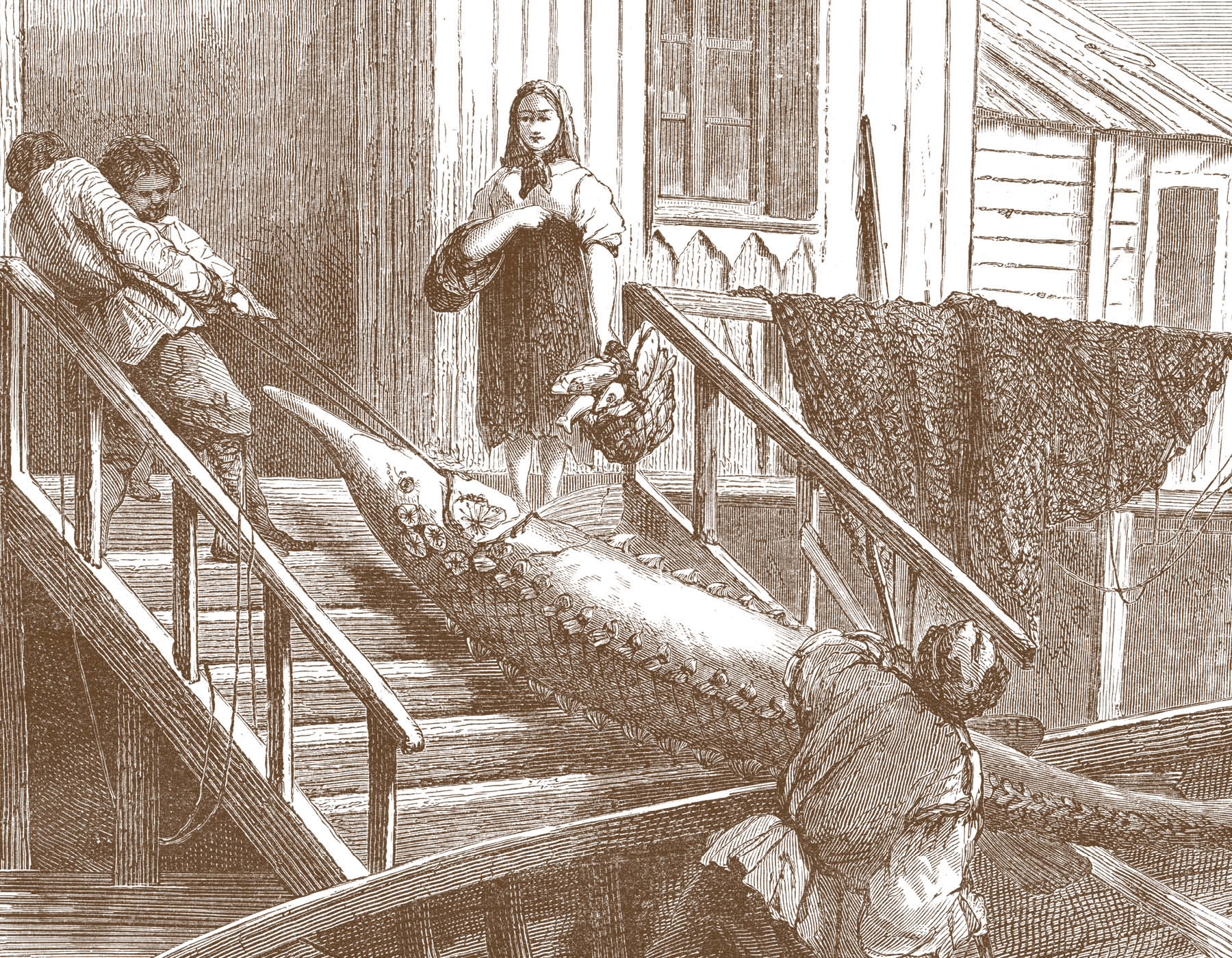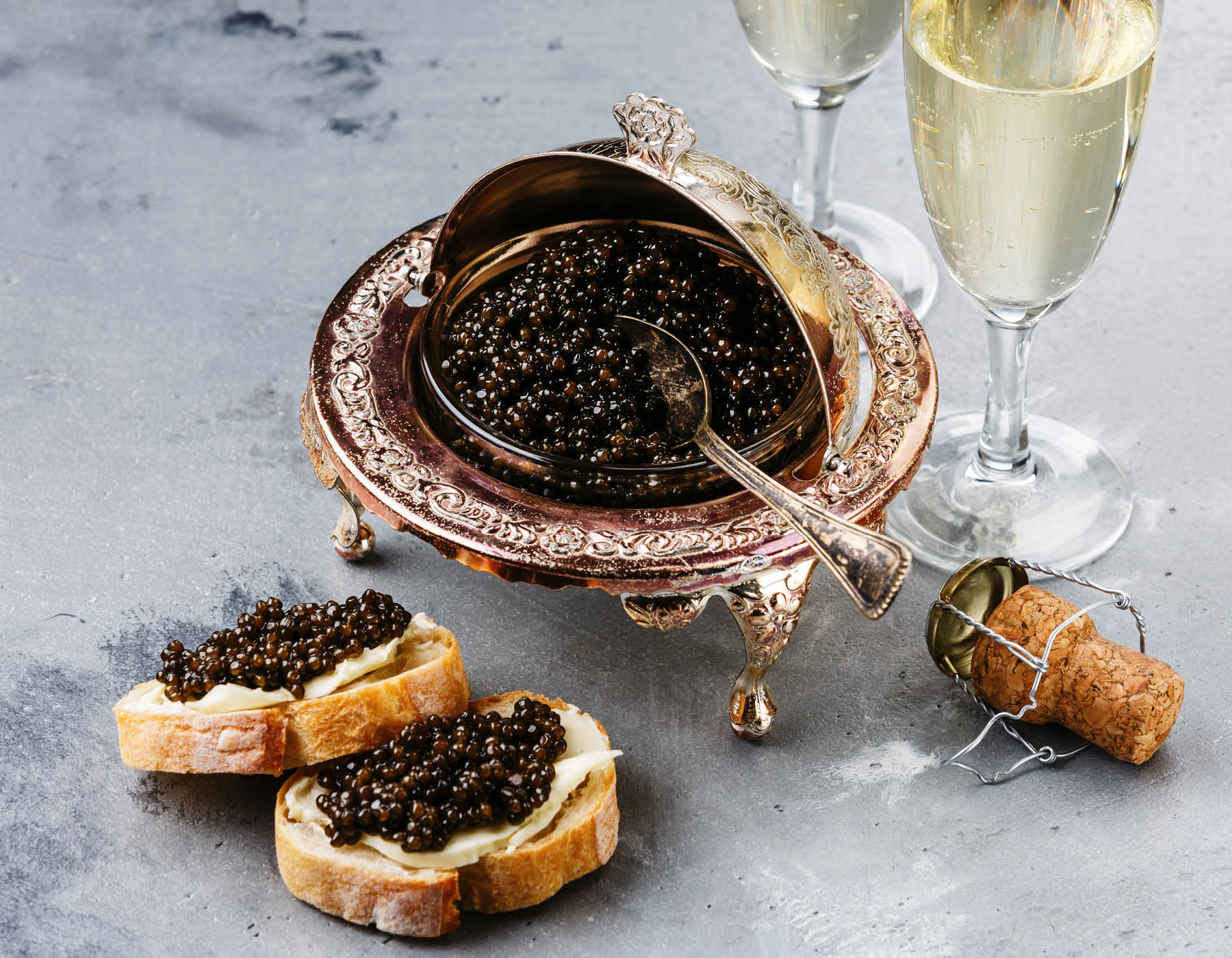Language
You can read the magazine in one of the following languages
Geolocation
You can read the global content or the content from your region

While much of the global population knows what caviar is, Gourmet Providores Group’s Caviar Ambassador Lisa Downs says 90 per cent of the information people believe to be true about cured roe is incorrect.
“Most consumers believe caviar originated in Russia. It was actually the Persians who were the first people to begin curing the roe of sturgeon,” she shares. “It wasn’t until the 12th century that Russians began to fish for sturgeon, and it wasn’t the caviar they were interested in; it was actually the sturgeon meat. As the popularity of sturgeon increased, so did the price.”
The world’s most expensive caviar has a unique ability to transcend cultures. From Europe to Asia, the delightful delicacy is desired by billions.
True caviar is only produced by sturgeon – a type of fish dating back 250 million years, making it one of the oldest living things on Earth.
“There were sturgeon swimming around long before dinosaurs,” Downs says. “It has only taken humankind the past 120 years to push a number of the 27 types of sturgeon onto the endangered species list.”
In 2008, the Convention on International Trade in Endangered Species of Wild Fauna and Flora made it illegal for commercial and recreational sturgeon fishing. People caught with sturgeon are jailed for five years and fined. “It’s been a successful ban, with only about four to five per cent trade in the black market,” Downs reveals.
Who produces caviar? Prior to the ban, Russia’s Black Sea and Iran’s Caspian Sea produced 90 per cent of the world’s caviar. Today, sturgeon is farmed globally with China being the largest volume producer of the precious pearls, followed by Italy and France.

Following the 13th century Mongol invasion of what is today northern Russia, its locals were taught how to farm sturgeon roe. Due to the abundance of fish, villages could be fed for months just from a single day’s fishing. The newly sanctioned, very cheap, accessible protein immediately became a hit with Russians.
“A lot of old Russian recipes show you how to use caviar as a fat source in cooking because at the time it was much cheaper than buying butter,” Downs says.
However, as sturgeon became more popular, prices gradually increased. By the 14th century, the cost became too much for everyday Russians to afford. To allow its people to still enjoy the delicacy, the Russian Orthodox Church made it a specialty to be served to all on religious feast days.
“With a traditional caviar tasting, we would recommend you cleanse the palate with a little shot of vodka first.”
When Czar Nicholas of Russia took reign, his adoration of caviar led to new taxes that put it further out of reach for the common people.
“The glorification of caviar moved from being a very common food to being a food designated to only being eaten by the royal family of Russia,” Downs explains. “Over the 27 years of Czar Nicholas’s reign, it was enough time for wealthy and educated Russians to become enamored with caviar.”
This fascination with caviar began spreading to the rest of the world when, following the Russian Revolution in 1917, the delicacy was marketed to affluent Europeans and North Americans. Demand soon outstripped supply, pushing prices up and making caviar an expensive luxury for only the wealthiest customers.
“With a traditional caviar tasting, we would recommend you cleanse the palate with a little shot of vodka first,” Downs says.
The classic way to eat caviar is to use a mother-of-pearl spoon to scoop the cured roe from the tin onto the top of your hand, between your thumb and forefinger. Then wait until the caviar is no longer cold before licking it off.
Stored at –4°C (24.8°F), caviar is kept cold to contain the fats and lipids within each membrane. However, to eat caviar, the fats need to be warmed up to blood temperature for the ultimate flavor journey.
“It’s almost like eating two different things – to eat a very cold caviar, then to eat it at blood temperature,” Downs points out.
You can also enjoy the world’s most expensive caviar with blinis, creme fraiche and a glass of Ruinart Champagne.

Siberian caviar: adored for its sweet, nutty flavor and grey pearls. An initial burst of salt explodes on your palate, disappearing quickly into a buttery and creamy sensation.
Russian Oscietra: considered the second-best caviar in the world. Produced by a 9–13-year-old sturgeon, the pearls have been maturing longer, making for a slightly more intense experience.
“Very good caviar does not pop. It’s a complete fallacy that good caviar pops.”
Beluga caviar: the world’s most famous caviar. One of the most expensive caviar options on the global market isn’t expensive because it tastes exceptionally unique; rather, its price is due to the fact that the sturgeon producing it is the largest of its kind. A Beluga sturgeon won’t produce roe until it’s about 21–24 years old – and they can live upwards of 120 years.
“A definitive way to tell Beluga caviar against any other caviar is that it has a little tiny eye in every pearl,” Downs explains. “If you’re served Beluga caviar at a restaurant and it’s jet black and there’s no eye in the pearl, pop that lid back on and send it back because it’s definitely not Beluga.”
Almas caviar: the most expensive caviar in the world. Also known as 24-karat gold caviar or black gold, the cured roe sells for more than US$30,000 per kilogram. The unique produce is only produced by a genetically albino sturgeon or extremely old sturgeon, making it exceptionally rare.
“Very good caviar does not pop. It’s a complete fallacy that good caviar pops,” Downs stresses. “If you have to push the caviar against the roof of your mouth, that would mean the caviar has been pasteurized.
“When you actually taste caviar when it comes straight from the sturgeon, it actually tastes like nothing. It’s very bland. So it’s all about the amount of salt we use and the length of time we leave it in the origin – or mother – tin to let the salt interact with the fats and develop the flavor.”
• For medicinal purposes: in Persia, they would feed their ill caviar to build strength in their immune systems.
• As a fat source: sturgeon caviar contains 70 per cent fat and lipids. Butter has 80 per cent fat.
• As a superfood: it has 45 vitamins and minerals, all the omegas, magnesium, zinc, amino acids – all helping to protect your neural pathways, heart and circulation.
• For skin care: not only does its nutritional powers benefit you when you eat it, but it also has proven cosmetic advantages pioneered by La Prairie.